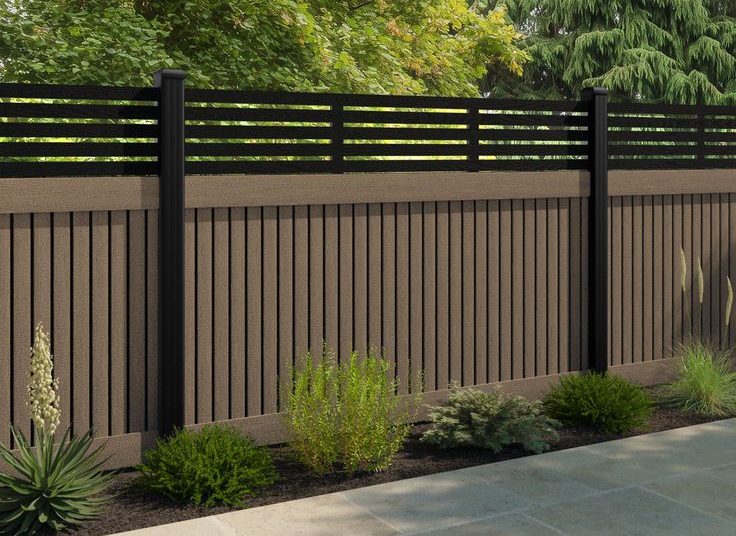Investing in a WPC (Wood-Plastic Composite) fence for your New Zealand property is a decision that promises durability, low maintenance, and a modern aesthetic. However, understanding the associated installation costs is crucial for effective budgeting. While WPC materials themselves might have a higher upfront price than traditional timber, the overall project cost is influenced by various factors, including whether you opt for a DIY approach or professional installation.
This article breaks down what to expect regarding wpc fence installation costs in New Zealand, helping you plan your project with clarity.
1. Material Costs: The Foundation of Your Budget
The cost of WPC fence panels and posts forms the primary component of your budget. Prices can vary based on quality, design, and supplier.
- WPC Panels: Expect to pay per panel or per linear metre. Prices for WPC fence panels in New Zealand can start from around NZD $250 – $300 for a standard-sized panel (e.g., 1.6m H x 1.8m W or 1.8m H x 1.8m W). More intricate designs, thicker panels, or premium finishes might be higher.
- Posts: WPC fences typically use either WPC posts or aluminium posts. Aluminium posts are common for their strength and sleek look. Costs for posts will be additional to the panels.
- Hardware and Accessories: This includes post caps, mounting brackets, rails, and fasteners. Most WPC fence kits will include these, but if buying components separately, factor these in.
- Gates: If your fence design includes gates, these will be a separate, often significant, cost due to additional materials and hardware (hinges, latches, automation if desired).
2. DIY vs. Professional Installation: Labour Savings
The biggest variable in total installation cost is whether you choose to install the fence yourself or hire professionals.
- DIY Installation: This is the most budget-friendly option for labour costs, as you’re providing the manpower. WPC fence kits are often designed for straightforward DIY assembly, with interlocking or slot-in systems. Your costs will primarily be for materials, tool rental (if needed), and consumables like concrete.
- Potential Savings: Significant savings on labour, potentially reducing the overall project cost by 30-50% compared to professional installation.
- Considerations: Requires time, basic carpentry skills, and physical effort. Proper planning and execution are crucial to ensure a sturdy and compliant fence.
- Professional Installation: Hiring experienced fencing contractors ensures a high-quality, efficient, and compliant installation.
- Labour Costs: Professional installation costs in New Zealand can vary widely based on location, complexity, and the contractor’s rates. As a general guide, professional installation might add NZD $50 – $150+ per linear metre on top of material costs, depending on the fence type and site conditions.
- Benefits: Expertise, efficiency, adherence to building codes, and often a warranty on workmanship. This is ideal for those who lack the time, skills, or desire for a DIY project.
3. Factors Influencing Overall Installation Costs
Beyond materials and labour, several other elements can affect the final price of your WPC fence installation.
- Fence Length and Height: Longer fences require more materials and labour. Taller fences (e.g., 1.8m to 2.4m for privacy/security) will use more material per linear metre and may require more robust post foundations, increasing costs.
- Site Preparation:
- Existing Fence Removal: If an old fence needs to be demolished and removed, this will add to the cost.
- Terrain: Sloping, uneven, or rocky terrain makes digging post holes more challenging and time-consuming, increasing labour costs. Very steep sites might require specialised techniques or equipment.
- Obstacles: Working around existing trees, large rocks, garden beds, or utility lines can add complexity and cost.
- Accessibility: If the fence line is difficult to access for materials delivery or machinery, this can increase labour time and costs.
- Gates and Customisations: Adding gates (especially automated ones) or incorporating custom designs, unique panel configurations, or integrated features (like lighting) will increase the overall price.
- Permits: Depending on the fence height and location, you may need a building consent from your local council, which involves application fees and potential engineering requirements.
4. Long-Term Value: Beyond the Initial Cost
While WPC fencing might have a higher upfront cost than basic timber, it offers significant long-term value that contributes to its overall affordability. Its exceptional durability and minimal maintenance requirements (no painting, staining, or sealing) mean substantial savings over its 25-30+ year lifespan, making it a wise investment that pays off over time.
By considering these factors and obtaining detailed quotes, you can accurately budget for your WPC fence installation, ensuring a successful project that enhances your property for years to come.








